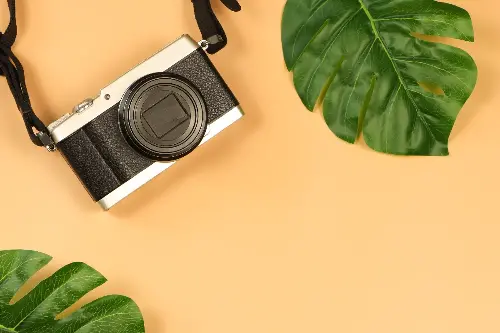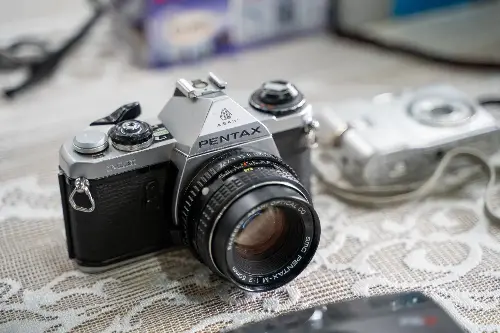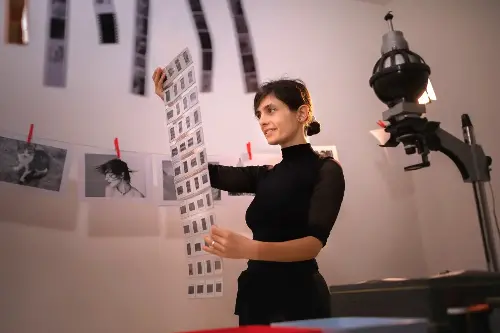In a digital age where images are captured, shared, and edited with blazing speed, the timeless charm of film photography continues to enchant beginners and seasoned photographers alike. If you're eyeing to explore the slower, more deliberate approach of analogue photography, you're in for an adventure that's as thrilling as it is rewarding. Embarking on your film photography journey requires a blend of knowledge, patience, and appreciation for the craft. Before you dive in, here's a guide to help you choose the right camera and discover the undeniable beauty of analogue images.

Selecting your first film camera can be as personal as it is technical. Start by considering the type of photography you're interested in. Are you drawn to the classic street photography of yesteryear, the candid emotions captured in portraiture, or the majestic landscapes that seem tailor-made for film? Your intended style will guide your camera choice.
35mm SLR (Single Lens Reflex) cameras are the most popular for beginners due to their versatility and affordability. Renowned models like the Pentax K1000 and Canon AE-1 are praised for their robust build and ease of use. They offer a straightforward learning curve that is perfect for mastering the basics of exposure and composition. DSLRs, with their interchangeable lenses and manual controls, mirror these film cameras and can make the transition smoother for those who have some digital experience.
If simplicity is your mantra, consider a point-and-shoot camera. Compact and user-friendly, they're equipped with automatic exposure settings, which means you can focus more on framing your shots. Cameras like the Olympus MJU-II or the Yashica T4 have gained celebrity status for their quality lenses and portability. However, if you're after more control and higher image quality, a medium format camera like the Pentax 67 or the Mamiya 7 might be up your alley. Bear in mind, though, that they can be heftier on the wallet and more challenging to master.

After choosing your camera, it's time to delve into the world of film stocks. Each film has its character, influenced by grain, contrast, and colour rendition. Favourites among photographers include Kodak Portra for its flattering skin tones, Fujifilm Velvia for vivid landscapes, and Ilford HP5 for classic black and white photography. Experimenting with different films is part of the joy of film photography; each roll is a new opportunity to capture life's moments in a distinct aesthetic.
Understanding the workings of your camera is integral to your growth as a film photographer. Get to know your camera's metering system to gauge exposure correctly. If your camera lacks an in-built meter, a handheld light meter can be a valuable tool in your kit. Learning to manually set your aperture, shutter speed, and focus might be daunting at first, but it offers creative freedom and the ability to adapt to various lighting conditions.
Developing your film is just as important as taking the photograph. While sending off your film to a lab is convenient, developing at home is a gratifying process that can deepen your connection to your work. Building a small darkroom and acquiring the necessary chemicals and equipment can transform your relationship with photography, giving you control over the entire creative process.

Embracing the limitations of film is part of the allure. With limited exposures per roll, each shot demands consideration and intentionality. This discipline hones your eye and can improve your skills more than the shoot-and-delete mentality of digital often allows. It's about being present in the moment and engaging fully with your subject, whether that's a flower in the garden or a bustling urban scene.
Film photography also teaches patience. The wait between finishing a roll and seeing the developed pictures is a lesson in delayed gratification that the instant feedback loop of digital devices lacks. It's a chance to step back from our high-speed culture and savour the anticipation.
Lastly, film has an organic quality that digital photographs can struggle to emulate. Analogue images carry imperfections, subtleties, and a unique grain structure that give them a soulful quality. The tactile experience of loading film, advancing frames, and the distinct click of the shutter are things no digital camera can quite replicate.
Whether you're captivated by the nostalgia or excited by the challenge, film photography is an enriching pursuit that inspires creativity and thoughtfulness. The journey is as important as the images you'll create, serving not only as a counterpoint to the digital age but also as a testament to the enduring beauty of analogue photography. As you embark on this journey, cherish both the pictures you'll capture and the experiences along the way. After all, each frame you shoot is a tangible slice of time, a physical memory that, like a fine wine, only appreciates with age. Welcome to the rewarding world of film photography—may your negatives be dense and your prints luminous.
